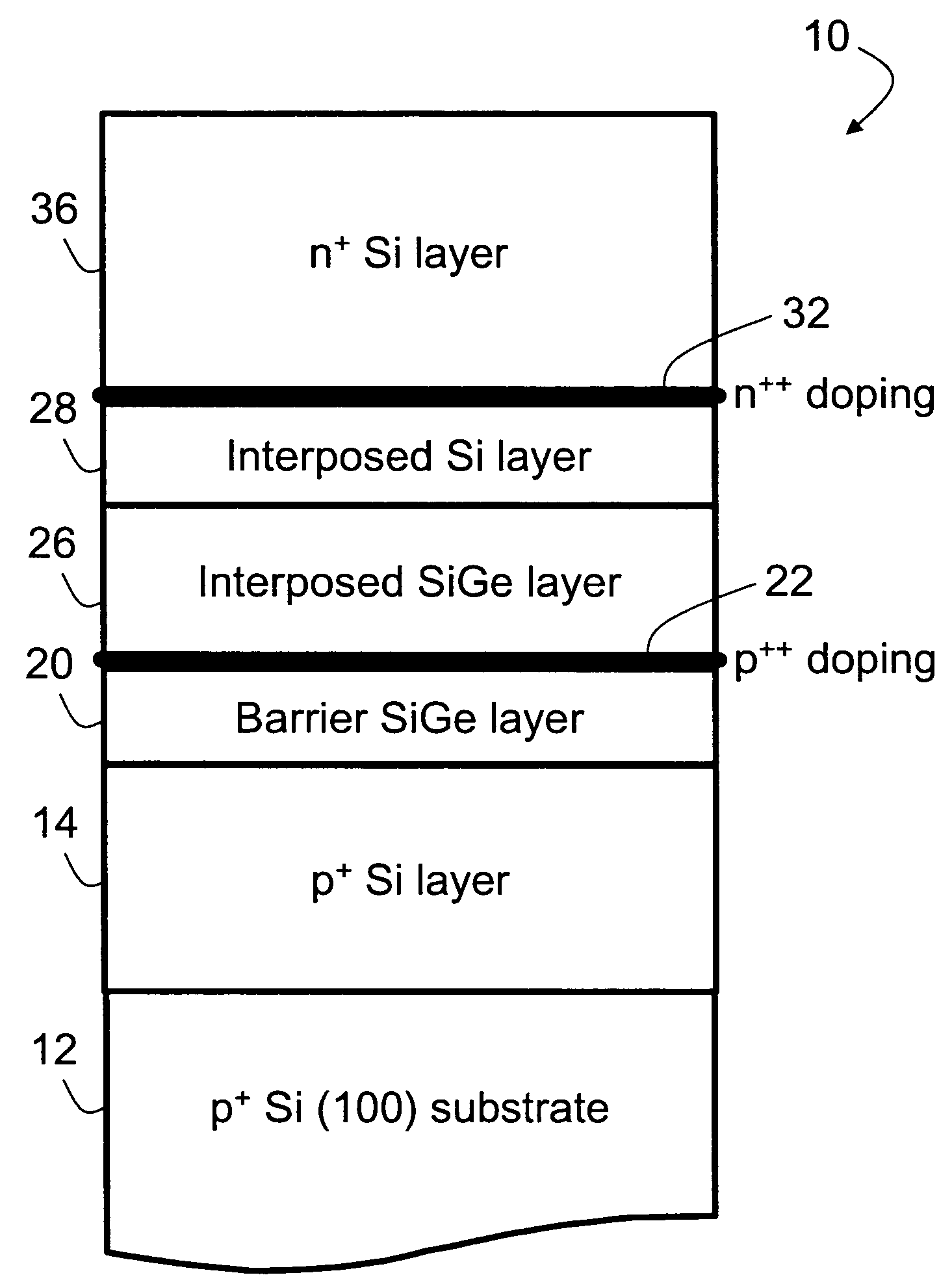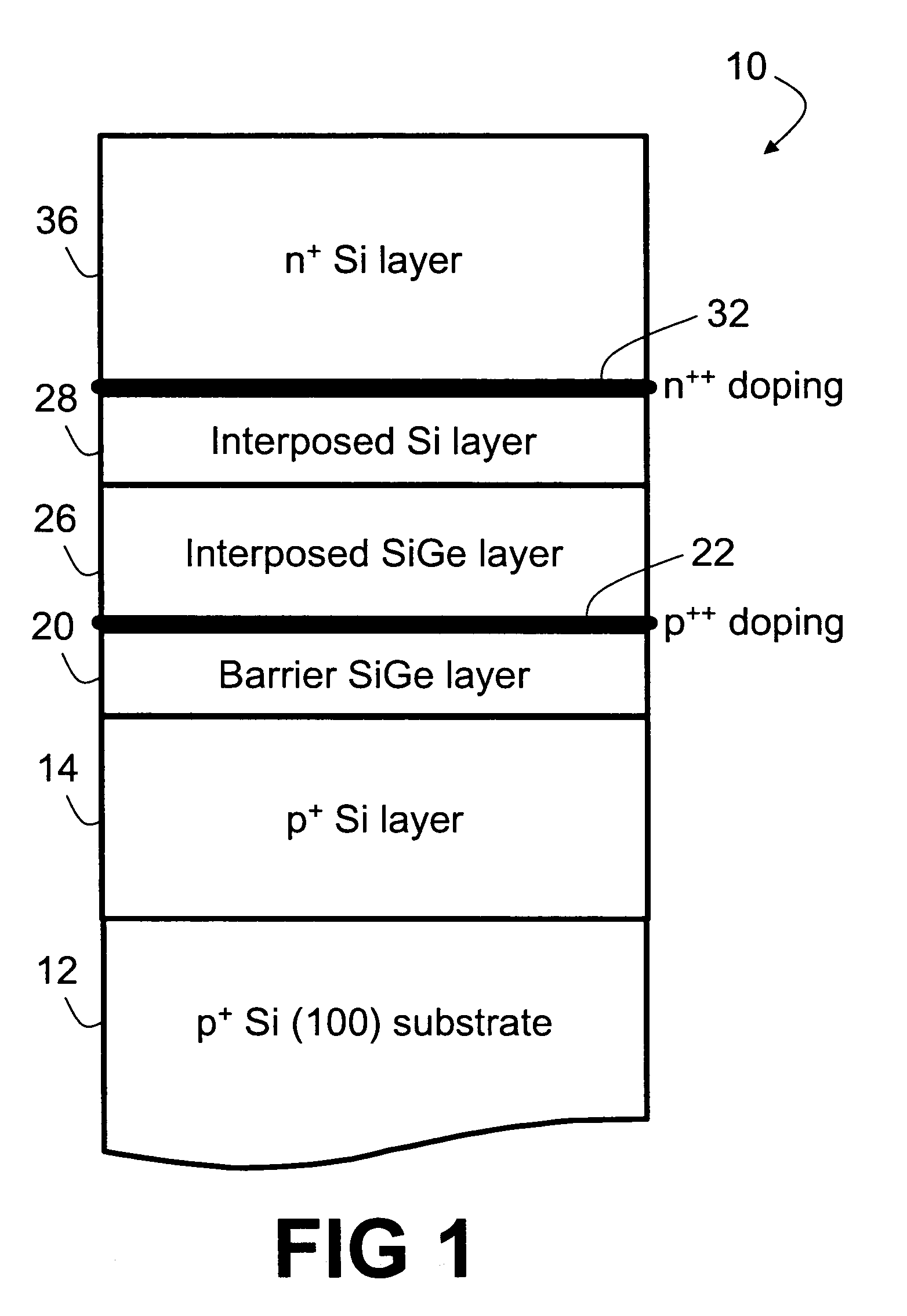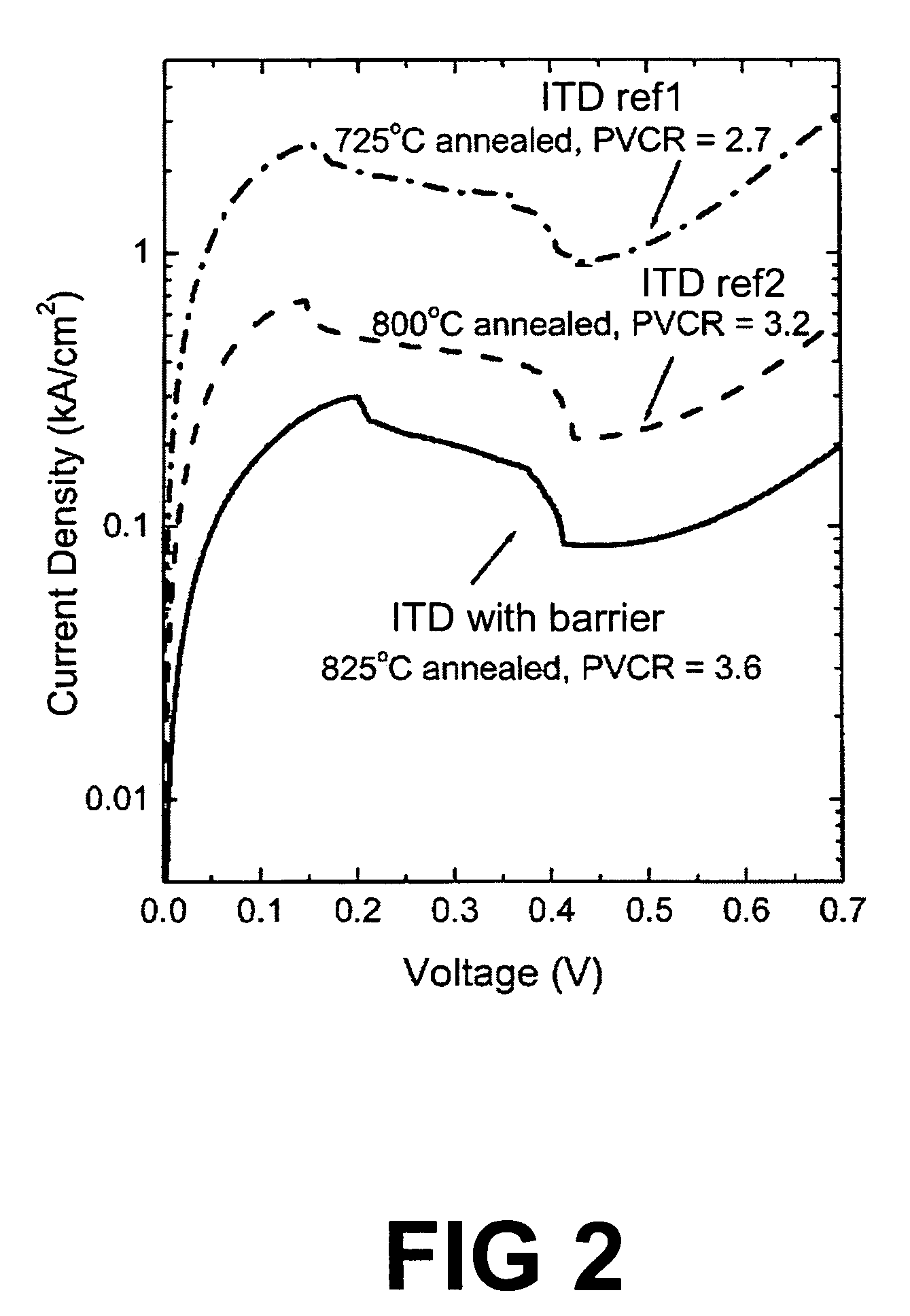Si/SiGe interband tunneling diode structures including SiGe diffusion barriers
a tunneling diode and interband technology, applied in the field ofsemiconductor arts, can solve the problems of difficult production of the structure of the tunneling diode and limited thermal budget, and achieve the effect of suppressing the diffusion of acceptors
- Summary
- Abstract
- Description
- Claims
- Application Information
AI Technical Summary
Benefits of technology
Problems solved by technology
Method used
Image
Examples
Embodiment Construction
[0021]With reference to FIG. 1, an example interband tunneling diode (ITD) 10 is formed on a p+ silicon substrate 12. The ITD 10 includes a plurality of group IV layers epitaxially grown on the substrate 12 by a suitable low temperature epitaxy method that reduces dopant segregation and diffusion during epitaxial growth, such as low temperature molecular beam epitaxy (LT-MBE), low pressure chemical vapor deposition (LPCVD), ultra-high vacuum chemical vapor deposition (UHV-CVD), solid phase epitaxy, or the like. In the illustrated example embodiment, the ITD 10 includes an epitaxial p+ silicon layer 14 grown on the substrate 12 and a barrier silicon-germanium layer 20 grown on the p+ silicon layer 14, followed by formation of a degenerately p-type doped region 22. In FIG. 1, the degenerately doped p-type region 22 is a p-type delta doping formed as follows: during a growth interruption in which the group IV epitaxial growth is interrupted, an acceptor species is applied to the expose...
PUM
 Login to View More
Login to View More Abstract
Description
Claims
Application Information
 Login to View More
Login to View More - R&D
- Intellectual Property
- Life Sciences
- Materials
- Tech Scout
- Unparalleled Data Quality
- Higher Quality Content
- 60% Fewer Hallucinations
Browse by: Latest US Patents, China's latest patents, Technical Efficacy Thesaurus, Application Domain, Technology Topic, Popular Technical Reports.
© 2025 PatSnap. All rights reserved.Legal|Privacy policy|Modern Slavery Act Transparency Statement|Sitemap|About US| Contact US: help@patsnap.com



